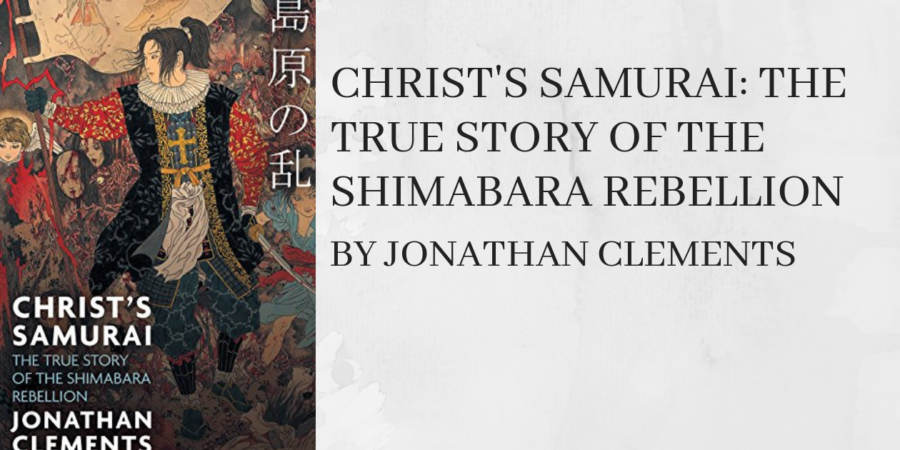After reading about Nagai Takashi’s – a Japanese Christian – response to the bombing of Nagasaki, I decided to go back in time and continue reading about Christianity in Japan. This time, however, the topic is completely different. Christ’s Samurai is an account of the Shimabara rebellion, which has the dubious honour of being the only Christian uprising in Japan.
Christianity was first banned under the reign of Hideyoshi, and the change of power to Ieyasu Tokugawa did nothing to lessen that. In fact, the in-fighting between the various ‘Christian’ countries led the Japanese to be very wary of the foreigners and the religion they preached. Not the mention that a conversion to Christianity meant pledging allegiance to someone who was not the Shogun or the Emperor. It was not inconceivable that they would use this new religion to take over Japan; this was the fear that led to Christianity being banned despite a few high-profile converts.
Unfortunately for the Tokugawa, the ban against Christianity was not effective. Despite the brutal methods used, Japanese Christians were eager to be martyred for their faith. As the foreign priests were forced to leave Japan, rumours of a prophecy sprang up (conveniently appearing around the time of Jerome Amakusa/Amakusa Shiro’s appearance):
When five by five years have passed
Japan will see a remarkable youth
All-knowing without study.
See his sign in the sky
In East and West the clouds will burn
Dead trees shall put forth flowers
Men shall wear the Cross on their heads
And white flags shall flutter on the sea
Fires engulf fields and mountains, grass and trees
To usher in the return of Christ.
Christ’s Samurai is an account of the Shimabara rebellion, tracing it back to its roots when Christianity was introduced into Japan. I’ve been interested in the history of the kakure kirishitans (or senpuku kirishitans) ever since I read Endo Shusaku’s Silence, so I devoured this book. While I knew of the Shimabara rebellion, I didn’t really know the details and it was good to see it all in one place.
I also managed to learn more about the peculiarities of the kakure kirishitan’s faith. I had heard that their theology changed through years of isolation and the necessity of hiding their faith, but I never really heard how. The last section of the book touches on how the Bible stories of the kakure kirishitan’s differ with orthodox theology, which was fascinating. I wish that a bit more time was spent on this section, although I suppose I’ll have to read a book specifically about their theology to go in-depth on the topic.
The story is told in chronological order, though the first few paragraphs of each chapter is a snapshot of the author traveling around modern-day Japan. Some of the information was useful, but it never really developed into a secondary narrative, which gave it a sense of incompleteness to me.
While the book gives a good overview of the Shimabara rebellion, it doesn’t really go into Amakusa Shiro’s life. Perhaps there’s a lack of good primary sources, but I wasn’t very clear about what he preached or about how he became the face of the rebellion. We’re told that he was very charismatic and that he might have suffered from a disease, but there was a lack of details about his life. This book is more focused on the rebellion as a whole rather than Amakusa Shiro as a person.
If you haven’t heard of the Shimabara rebellion and you have an interest in Japanese history, you need to read this book. It introduces a part of Japanese history that is fascinating but isn’t very well-known.

This does sound fascinating. I love history, and although I am not a religious person, I do find the evolution and ebbs and flow of religion in different countries and cultures interesting. Thank you for sharing!
I think you’d like this! It definitely does not evangelise – just looks at how Christianity influenced this rebellion. Very interesting and something that you don’t really hear about!
This sounds very interesting!
I’d definitely recommend it! I don’t think I’ve seen this topic covered much!